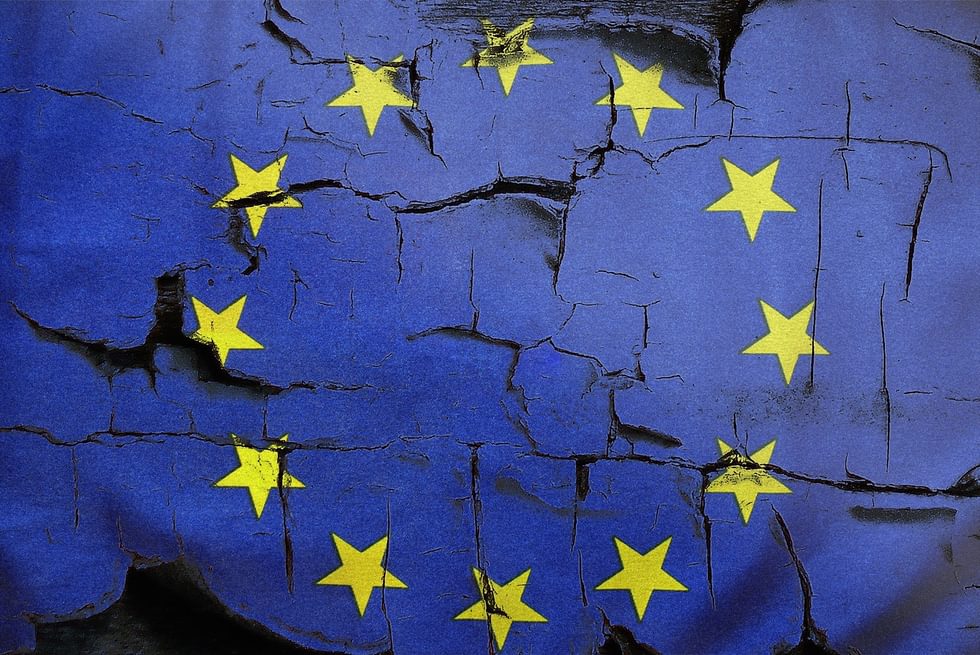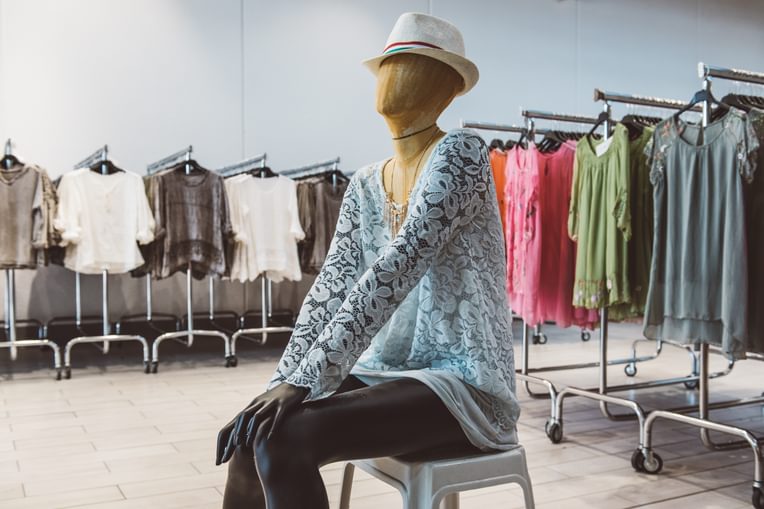“One world ends and another begins”: Making Sense of Migration
From the Series: Europe in the Balance
From the Series: Europe in the Balance


As global supply chains became the new normal, and as well-demarcated fashion seasons changed into fluid and fickle trends, the Made in Italy sector witnessed a remarkable turn of events: thousands of Chinese immigrants settled into the industrial zones of greater metropolitan Tuscany first to make leather goods, then to make clothes. Warehouses blared pronto moda, fashion that is fast and ready. Billboards displayed messages in Chinese characters. The local manufacturing scene countered overseas outsourcing trends. Chinese entrepreneurs described themselves as having a “spiritual insistence.”1
Meanwhile, motivating ambitions and crushing defeats surged through an intensely globalized age. Individuals, families, institutions, and a city have become entangled in the hegemony of global supply chains.
In the factory city of Prato, north of Florence, 15 percent of the 185,456 residents are classified as foreigners. This compares with a rate of 6.8 percent nationwide. These numbers have earned Prato a designation as Europe’s number one multicultural city. Migrants come from 118 different countries. The most notable carry Chinese passports.
I was conducting fieldwork in 2013 for my new book when I encountered Matteo Biffoni, who this June won Prato’s hotly contested mayoral race. Six years earlier, he was running for a seat in the Italian Parliament and appeared at a “Democratic Breakfast” at a cultural center on the borderland between the industrial district and the Montalbano foothills. His message was clear: “The mother of all battles will be work.”
How to recover from the crisis was on people’s minds. The economic downturn had brought despair. Unemployment was rampant. Poverty was on the rise. Indicators revealed 33 percent of the population in Prato had a low annual income, below €10,000.
Historically, the success of the Made in Italy brand was attributed to small family firms adept at meeting production demands. Economists lauded these firms for their flexibility. Forgotten were the strikes of the 1960s that led to the dynamic small-firm landscape. Even less celebrated is what made flexibility possible: an informal economy characterized by family arrangements, unwritten contracts, work day and night, and networks grounded in secrecy, trust, and reciprocity.
Much work was outsourced to small family firms completing single stages in production cycles as wares moved from one workshop to another. I worked in a sweater-finishing firm for my dissertation fieldwork in the mid-1990s. Like most others owned and run by Italians, it has long since closed. But its former owner, whom I call Letizia, continued her struggles.
Between 2003 and 2010 Letizia’s township witnessed a 400 percent increase in the presence of migrants. Such numbers represent dramatic demographic and social changes. Tensions manifest.
Her struggles focused on art and the environment. Letizia was rooted in place, culturally and politically on the left, pushed to the right more recently, angry, full of fear, and adamant that she and her town had been subject to a hostile takeover. She agreed with framings of the Chinese migration to Prato as “a siege.” She asserted her local roots, saying that her ancestors had always been Tuscans, that her paternal grandmother was from the commune of Vinci, home of Leonardo, and that her father, a contractor, had initiated a cooperative style of financing during Prato’s boom years in the San Paolo neighborhood, in which dwellers could pay rent and eventually own their houses without the burdens of an official mortgage.
Born in 1941, Letizia grew up during the dopoguerra, the postwar, and watched her town transition from agriculture to industry.
“One world ends and another one begins.” She repeated the phrase like the refrain to a song. In the days of sharecropping, there was hardly any money. Once factory work took off, things changed. “The son of a peasant in one month in a factory, in one month, could earn as much as the entire family in a year,” Letizia said. “There was no comparison.”
Eventually, the peasants abandoned the countryside, moved to the flatlands, and built houses. Then, like a newly hatched butterfly with its own Made in Italy wings, another industry took flight: la maglieria, knitwear.
Unlike in the current period of crisis, work then was easy to find and workshops were everywhere—“like parsley,” an Italian colloquialism that analogizes the ubiquity of this popular herb.
“Knitwear worked like this: every house was a little workshop. What the Chinese do now, closed in the ghettoes of their big workshops, was done by the Italians, and in a certain sense we ourselves were the Chinese working in the houses with machines al nero,” literally, black, unregistered, or off the books and thus “illegal.”
As Letizia spoke, each word was drawn out, as though to emphasize a contrast with what the Italians did, back then, to what the Chinese were doing, now, only to realize that as she described the work, it sounded pretty much the same. Workshops with heavy equipment were often registered, but women, retirees, or youth who did finishing work by hand were 90 percent unregistered.
In Letizia’s eyes, there was a justification for the microenterprises that proliferated in Prato in the 1980s and 1990s. This economic activity enriched the area. It gave women and pensioners a bit of cash so they could indulge themselves every now and then. It was a classic case of household-based economic activity entangling with a global market in which factories did their outsourcing not beyond national borders but rather within their own territory.
At the end of the 1990s, immigrants were known to open enterprises with secondhand equipment, beat the Italians at tactics of circumventing tax laws, and charge half the price per piece. “This wiped out the microeconomy,” she said.
Although the Pratesi, too, were after money, Letizia asserted they were also capable of desiring something beautiful. “Our equilibrium is very delicate; it’s been thrown into crisis by many things,” she said, reflecting on her own values and highlighting democracy and art. “You can’t live without beauty; otherwise, we are really just brutes.”
1. Portions of this essay are excerpted from my book Tight Knit: Global Families and the Social Life of Fast Fashion (University of Chicago Press, 2018).